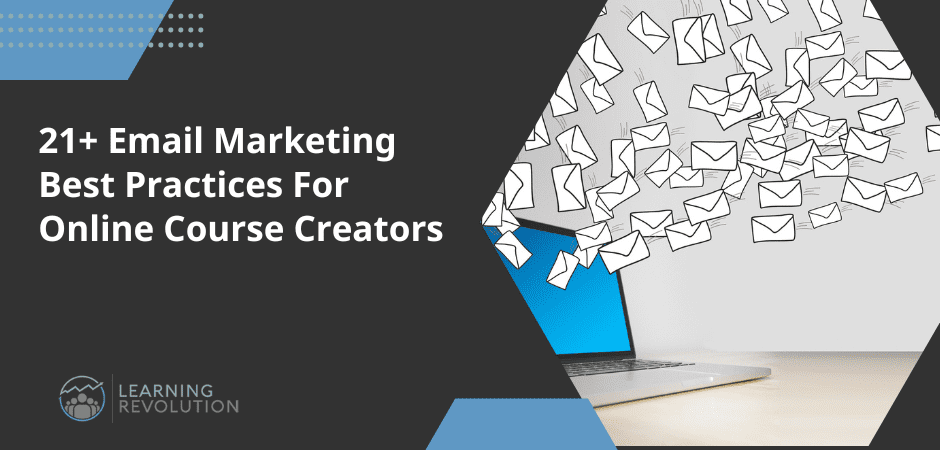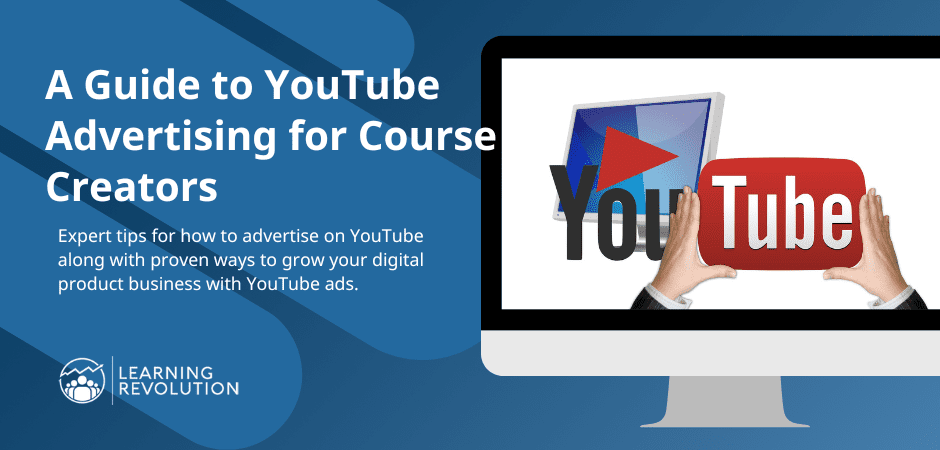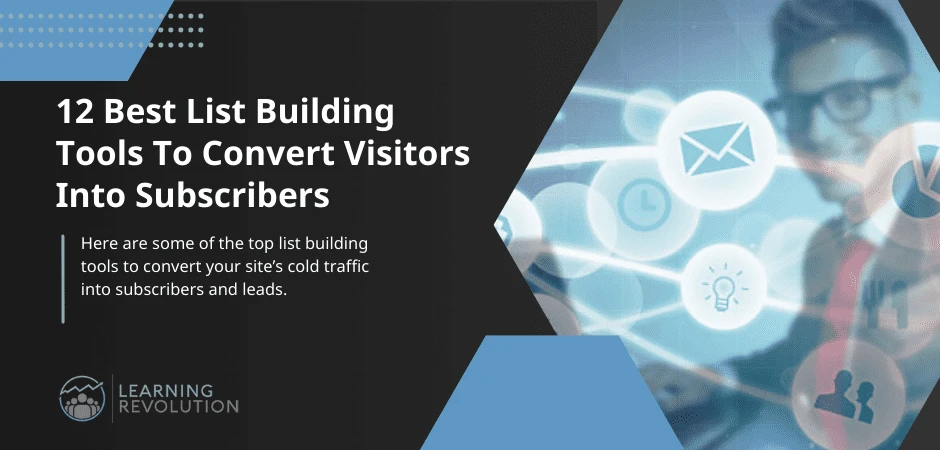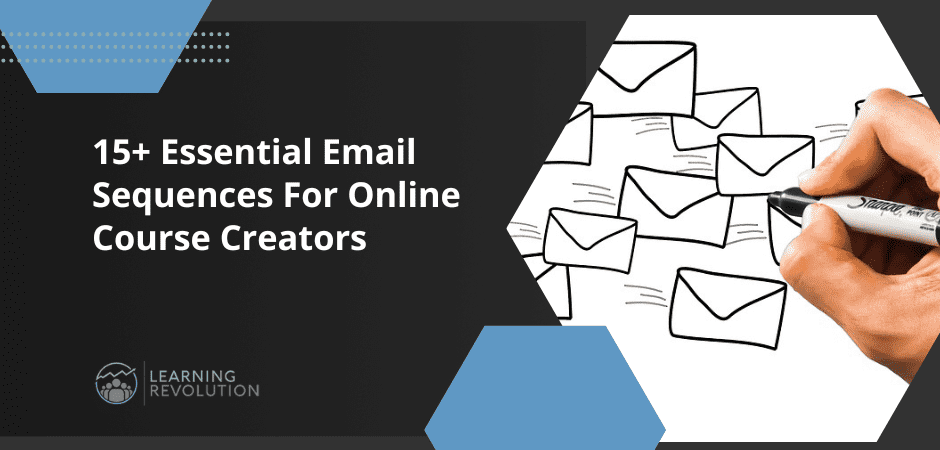

If you ask me to choose only one marketing channel for your online course, I’ll tell you to go for email marketing.
And I’m not alone.
According to a recent survey by Teachable, 66% of online course creators who earned between $10K to $20K in the last 12 months chose email marketing as their number one customer source.
But to drive user engagement, revenue, and repeat course sales with email marketing, you need to set up the right email sequences.
If you’re not familiar with email automation or sequences, don’t worry.
Because in this article, I’ll explain how automated email sequences work and share the most critical email sequences you need to include in your online course’s email marketing strategy.
Sound good? Let’s dive in.
What Is An Email Sequence?
An email sequence is an automated series of emails that you can send to your subscribers based on well-defined targeting criteria and a specific timeframe using your email marketing software.
Unlike broadcasts or one-time emails sent to specific subscribers, email sequences run on a loop and are sent to any users who meet your targeting criteria.
A sequence can include anywhere from one to twenty (or even more) emails designed to achieve a specific goal. For example, a Welcome sequence aims to introduce your brand to your new subscribers and usually consists of 3 to 5 emails.
Similarly, an abandoned cart email sequence is sent to subscribers who leave your site without purchasing your course after adding it to their cart. It usually consists of 2 to 3 emails.
Once a website visitor signs up to your email list, they start getting automated emails based on your targeting criteria.
You can fully personalize your messages using tags and fields, and even set a maximum number of active sequences per subscriber to ensure that you don’t overburden them with your emails.
The Benefits Of Using Email Sequences For Online Courses
Think of automated email sequences as plug & play marketing campaigns that free up your time and keep driving sales and course engagement even when you’re sleeping. This is why they’re critical to the success of any online course or digital product.
Some of the main benefits of using automated email sequences are:
– They allow you to regularly engage your audience and build a relationship.
– They help you establish your credibility as an expert by sharing valuable free content and actionable advice with your subscribers.
– They give you uninterrupted access to your subscriber’s inbox.
– They deliver your marketing messages to your subscribers in different time zones at the exact time you want.
– They help you drive traffic to your sales pages.
– They help you drive repeat sales.
– They allow you to keep your students engaged throughout the course duration.
– They help you educate your customers and help them get the most value from your courses.
– They help you gather testimonials and referrals for your courses.
Using email sequences for marketing your online courses and digital products has numerous benefits. But to make them work properly, you need to have two things in place.
- The right email marketing software with the necessary automation features.
- A relevant lead magnet to attract subscribers interested in buying your product.
Let’s now dive deeper into the types and mechanics of email sequences.
Types Of Email Sequences For Online Course Creators
Email sequences are critical for your marketing strategy as an online course creator and digital product seller.
To help you better understand how to use them, let me first explain the broad email sequence types for selling and promoting online courses.
Pre-Sale Email Sequences
Pre-sale email sequences are automated emails that you send once your website visitor downloads a lead magnet to subscribe to your email list.
Their main goal is to build a connection with your subscribers, build your authority as an expert by sharing free valuable content, and prepare them to purchase your products.
Course Launch Sequences
Course launch sequences build hype around your online course, make an irresistible offer, and convert your subscribers into customers.
These are sales emails that position your product as the best option for your subscribers and convince them to buy from you.
Post Sale Email Sequences
Post-Sale email sequences are designed to maximize your customers’ engagement with your course content and ensure that they get the maximum value from it.
They’re critical for your course’s success and play a vital role in helping you achieve a higher course completion rate. In addition, they allow you to generate more testimonials and case studies that you can use in your next launch campaign.
With this brief background, let’s now dive right into the various email sequences you need for launching and running a successful online course.
Pre-Sale Email Sequences For Online Courses
Here are some of the most commonly used pre-sale email sequences for online course creators.
1. Welcome Emails (3-5 emails)
Welcome emails are perhaps the most profitable of the various email sequences. According to research, they have significantly higher open and click-through rates (CTR) than regular marketing emails.
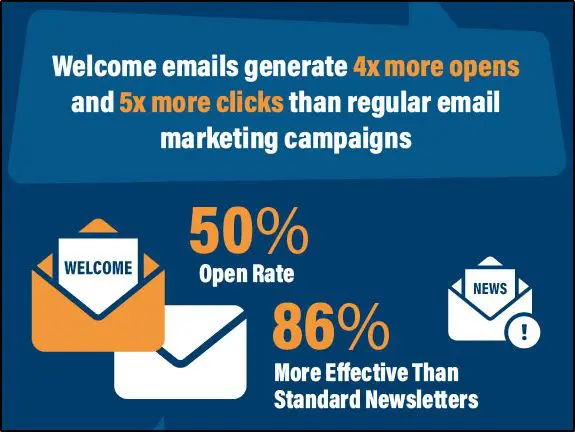

This doesn’t surprise me because users are quite motivated to take action when they sign up for your email list. This is the best time to introduce your brand, build a connection, and even turn them into buyers with a discounted offer.
So, what kind of emails should you include in a Welcome sequence? Typically, a Welcome sequence consists of 3 to 5 emails. Here’s a sample sequence to help you get started.
| Sent | Objective | |
|---|---|---|
| Welcome email | Immediately on sign up | To deliver the promised lead magnet and introduce your brand. Also, ask a quick question to get responses (e.g., tell me your biggest challenge with X?) |
| Tripwire email (optional) | 2 hours after signing up | To offer a heavily discounted product to convert your subscribers into buyers. The product could be a low-ticket product or limited-time access to a membership community. |
| Brand story | 1 day after signing up | Tell them your story, describe your journey, share your wins (e.g., brands you’ve helped or sites you’ve been featured on) |
| Follow up | 1 day after signing up | Check if your subscribers downloaded and used your free lead magnet. |
| Free value | 2 days after signing up | Share answers to the most common questions of your audience or share links to your most valuable free resources (blog posts, videos, etc.) |
| Free Value | 3 days after signing up | Share more free content along with links to your content |
| Questions | 4 days after signing up | Ask your subscribers to share their challenges that you can answer in a free blog post or video. |
2. Lead Nurturing (5-10 emails)
These emails are designed to strengthen your relationship with your subscribers and establish you as an expert. This is a critical email sequence and its quality plays a significant role in driving leads and customers for your premium course.
Most of the emails in this sequence will contain free value, tips, Q&As, and other resources to help your audience.
Here are a few ideas to help you get started.
| Objective | |
|---|---|
| Your story | Share something interesting from your journey and relate it to your audience’s struggles. |
| Free value #1 | Share tips, invite questions, link to a blog post or video |
| Free value #2 | Share tips, invite questions, link to a blog post or video |
| Free value #3 | Share tips, invite questions, link to a blog post or video |
| Case study#1 | Share a success story from your previous students, outline their challenges, and how they overcame them. |
| Case study#2 | Share a success story from your previous students, outline their challenges, and how your course helped them. |
| Soft invitation | Invite subscribers to join your course’s waitlist and get notified whenever you open the doors. |
3. Content Updates
Let your subscribers know via email whenever you publish a new blog post, guest post, podcast, or video. This is an easy way to keep them engaged and provide free value to build your credibility.
Here’s how Neil Patel shares content updates.
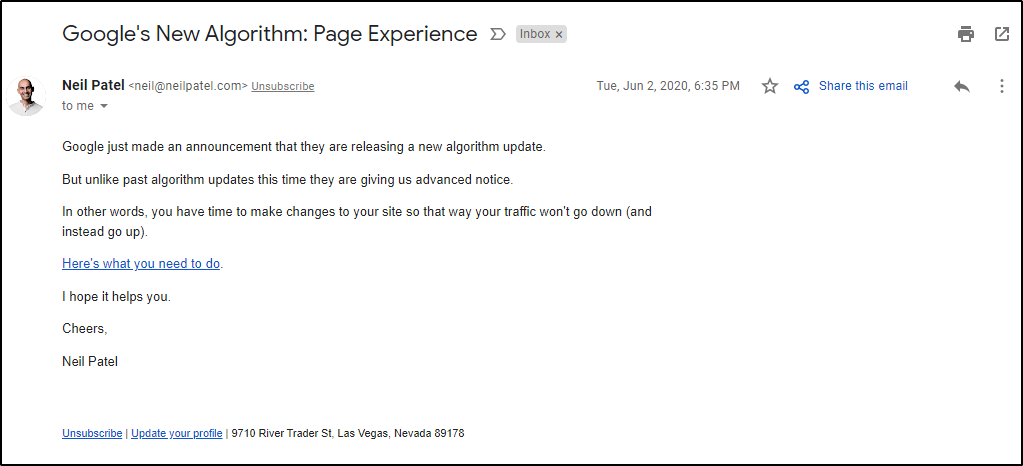

If you don’t publish too often but have past content in the bank, schedule weekly emails that share links to your best content one by one.
But if you publish too frequently (multiple content pieces per week), don’t send more than two updates per week. You could also send a weekly round-up email containing links to your recently published content.
Course Launch Sequences
You’ll send these emails once you open the doors to your online course and start actively promoting it to your subscribers.
Here are some of the email sequences you can use:
4. Course Launch (10-15 emails)
These are your money-making emails. Your launch sequence won’t have to work very hard if you’ve built a strong relationship with your subscribers using pre-sales emails.
However, if you’re already in launch mode and routing traffic from Facebook or other traffic sources to your email list, your course launch emails will have to do the heavy lifting.
So, what’s included in course launch emails?
Ideally, you should build momentum by sharing your own story, how your skillset transformed your life, and how it can help your subscribers.
Then proceed with your course announcement and offer a special early-bird price for subscribers who sign-up by a specific date.
Add dedicated case study emails to the mix to provide social proof of your course’s effectiveness.
Here’s an example of such an email from 10xFC, a premium freelancing course by CopyHackers.
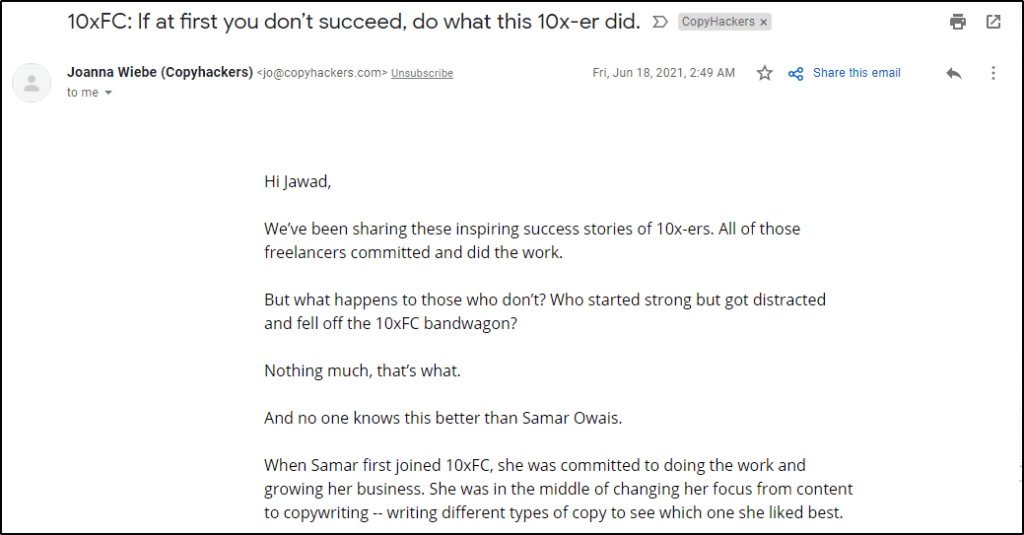

The number of emails in a course launch sequence depends on your relationship with your subscribers and how aggressively you want to promote your offers. But it’s common for marketers to send daily emails during a two-week-long course launch.
As you get close to the end of the launch, increase social proof and case study emails since they do a great job at persuading unsure buyers.
On the final day, send up to three emails reminding your subscribers that the doors are closing.
5. Browser Abandonment
These emails are sent to the subscribers who visit your course’s landing page from one of your launch emails, browse your course details but bounce off without reaching the cart stage.
They are extremely effective in bringing back lost customers and can significantly boost your course sales.
According to studies, browser abandonment emails have an 80.9% higher open rate and 50.5% higher click-through rate than traditional emails.
What do you write in such emails? Nothing complicated.
You simply remind subscribers that your product is still available and invite them back to your sales page. You can add another email to your abandonment sequence asking the subscribers why they didn’t proceed with the purchase.
However, not every email marketing platform offers browser abandonment emails since they require user tracking and advanced automation features. So, if you don’t want to lose customers, choose an email marketing tool with browser abandonment and other necessary automation features.
6. Abandoned Cart Emails (3-5 emails)
Abandoned cart emails are sent to your subscribers who visit your landing page, add your course to the cart, but leave your site without completing the purchase.
Like browser abandonment emails, abandoned cart emails also recover a large chunk of your lost sales because many customers abandon the purchase unwillingly or because of a tech issue. So, simply reminding them to come back can do wonders for your business.
According to studies, abandoned cart emails have an open rate of 49% and a click-through rate of 26%. Another study found that sending multiple abandoned cart emails results in more revenue.
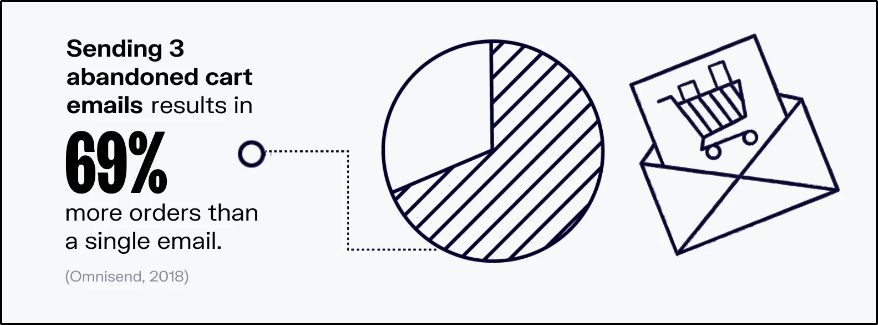

Ideally, an abandoned cart email sequence should have at least three email reminders sent every day from the abandonment day.
Its content should simply include a picture of your course and a reminder that the subscribers can still complete their purchase.
7. Thank You Email
Thank you emails are sent to your customers when they sign up for your course by completing the purchase. Most marketers treat these emails as a formality.
However, you can use them to strengthen your relationship with your audience and motivate them to get the most out of your course.
Your email content should reassure your customers that they’ve made the right decision and, if possible, should include a link to a video message congratulating them for joining your premium customer base.
Post Purchase Email Sequences
Your job doesn’t end as a marketer when your customers purchase your course. Instead, the real work starts now.
Post-purchase email sequences have three main goals.
– To keep your students engaged with your course content and help them get the most value from your course.
– To drive more revenue opportunities through upselling and cross-selling.
– Generating testimonials and referrals for your future launches.
Here are some of the email sequences you can use in this phase.
8. Welcome Email (1-3 emails)
The welcome email sequence for your students is designed to get them excited about your course and provide them with the necessary information to navigate your course and get the most value from it.
You can design a 1-3 email Welcome sequence which includes:
- Your course curriculum, broken down into modules and lessons
- Dates when each module becomes accessible (for drip courses)
- Access details for your LMS
- Links to support groups and communities for the course
- Contact details of the course manager
You could also include a quick 15-minute call to get to know your students better for early-bird signups, but that’s completely optional.
9. Upsell/Cross-Sell Sequences
Once a user signs up for your premium high-ticket offer, you could use small upsells and cross-sells to maximize your revenue and increase your per-student ROI.
There are many ways to do this.
For example, you could offer a one-on-one consultation offer for an additional fee, or you could offer your other products at a discounted rate.
The upsell/cross-sell sequences should ideally be sent immediately after your welcome sequence BEFORE your course starts. That’s because your customers are still energetic about signing up for your program and are likely to take any attractive offers.
These sequences could include 1-2 emails encouraging customers to sign up and sharing the benefits of your offer.
10. Course Engagement Emails
Did you know that 85% of students never complete an online course after signing up?
Keeping students engaged till the end is among the top challenges of online course creators. Because if students don’t complete your course, they won’t be able to get value from it. As a result, you won’t create any success stories, testimonials, or referrals.
Course engagement emails play a vital role in ensuring that your students stay motivated throughout your course and consume all your content.
There are several ways to use these emails. For example:
- Check-in with your students every week to see if they have any problems accessing and using the course.
- Send a dedicated email before every module describing what students can expect and how to get the most from it.
- Follow up on their assignments and quizzes.
- Send motivational success stories of past students to show them what’s possible.
Use these emails even if you have a dedicated Slack or Facebook group for your students because sometimes students don’t check group messages.
11. Re-engagement Sequence
Re-engagement sequences are designed for students who stop signing in to their LMS to access your course content. You can also send these emails to students who do not submit quizzes and assignments or aren’t active in your course groups.
These emails aim to bring students back to your course and resolve any problems they face in accessing or implementing your lessons.
To use these emails, you’ll need to integrate your email marketing software with your online course platform or use an LMS that also offers email automation features.
You can define a specific time when emails are sent to inactive students.
What should you write in these emails?
Ask students what’s stopping them from accessing your course? Is it tech issues, a problem with course content, or a change of heart?
Whatever it is, try resolving it so they can get back to learning with you.
12. Monthly Reports And Leaderboards
If you have multiple modules in your course with quizzes and assignments, it’s a good idea to share a monthly report highlighting the top three students who:
- Are the most active in your course groups
- Scored the highest marks in quizzes or assignments
- Implemented any of your lessons to achieve results
This would motivate other students to up their game, take your course more seriously, and apply your teachings to achieve results.
13. Testimonial Request
Towards the end of your course, email your students to share their thoughts on your course. Design a short survey with 2-3 precise questions to make their feedback more valuable. Of course, not all of them will respond, but even four or five responses are enough to help you put together testimonials for your next launch.
14. Referral Request
Ask your students to share your course with anyone who’d benefit from it. To motivate them, you can offer a 10% discount on your next product.
Emails For Non-Buyers
At the end of your launch sequence, some subscribers become customers. But some don’t.
Here are a few email sequences you can send to stay in touch with them and prepare them for your next launch.
15. You Missed Out
When your launch campaign ends, send this email to all the non-buyers. Its goal is to show them what they’ve missed out on.
But also tell them when you’ll open the doors to your course next.
16. Winback Sequence
You’ll send this sequence to the subscribers who did not open any of your launch campaign emails despite signing up for your list by downloading your lead magnet.
Have three to five emails in this sequence and try to understand why a subscriber isn’t engaging with your content. Are they not interested in the topic? Don’t have the budget to purchase your product? Don’t find your product valuable enough?
Understanding their reasons would help you adjust your future launch strategy.
You can also include a special offer or a discounted product to win back your inactive subscribers.
17. Lead Nurturing
Keep sharing free value with your subscribers so that they stay engaged with your brand while your course is not open for enrollment.
This could include emails with tips, content updates, questions, case studies, success stories, etc.
18. Sunset Sequence
This sequence is for subscribers who do not engage with your brand despite your efforts. At the end of this sequence, you’ll remove them from your list because having inactive subscribers is an unnecessary cost.
But to give them one last chance, use this sequence to tell them they’ll be removed from your list after 24 or 48 hours if they do not confirm they still want to be on your list.
What Email Sequences Are You Using?
The automated email sequences I’ve shared in this article will play a vital role in driving sales for your course and keeping students engaged with your content. But you can come up with more sequences for your audience if you see the need.
However, make sure your email marketing software supports automation, and you’re using the right lead generation tools to build your email before designing your email sequences.
By Jawad Khan for Learning Revolution
See also:
Table of Contents

